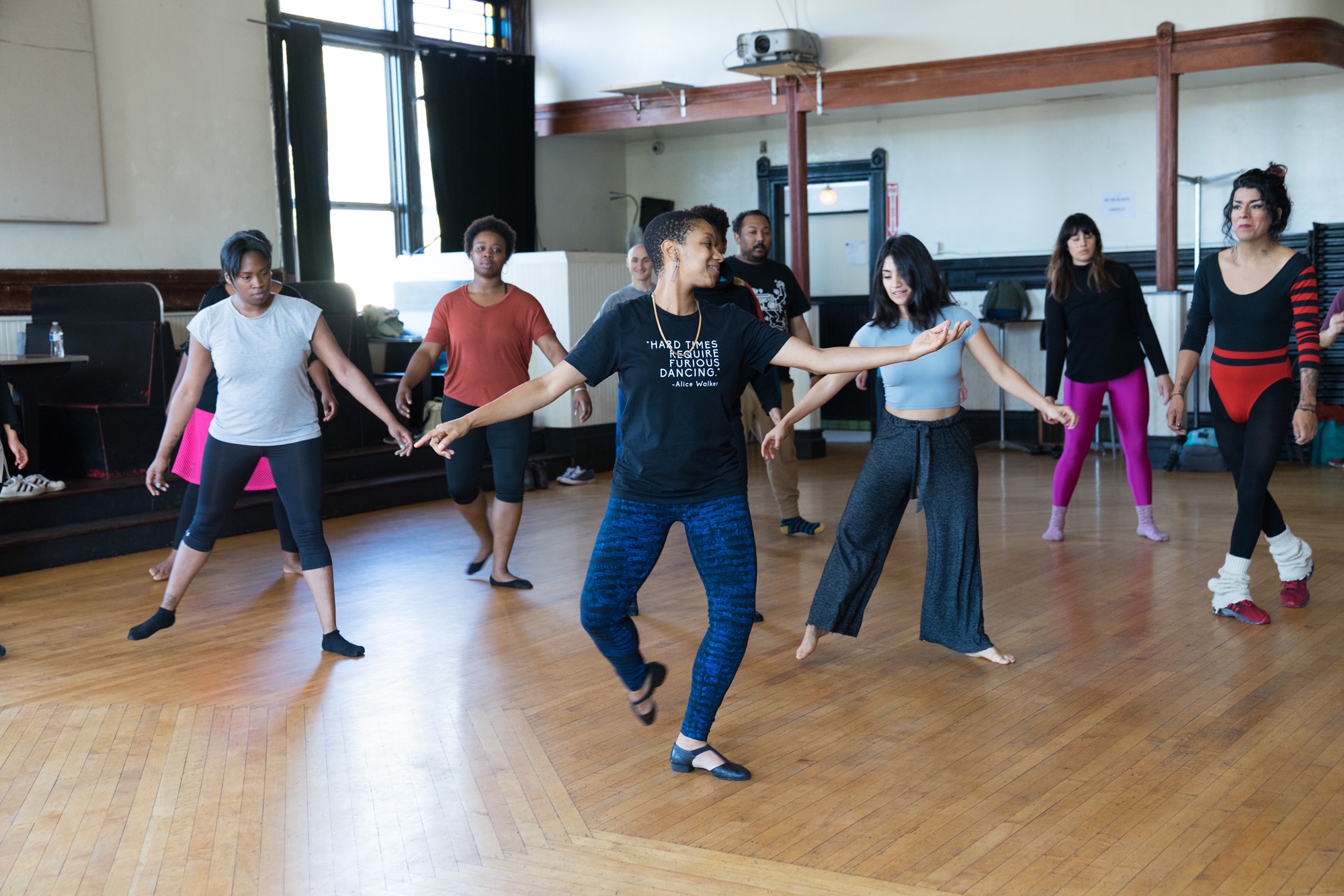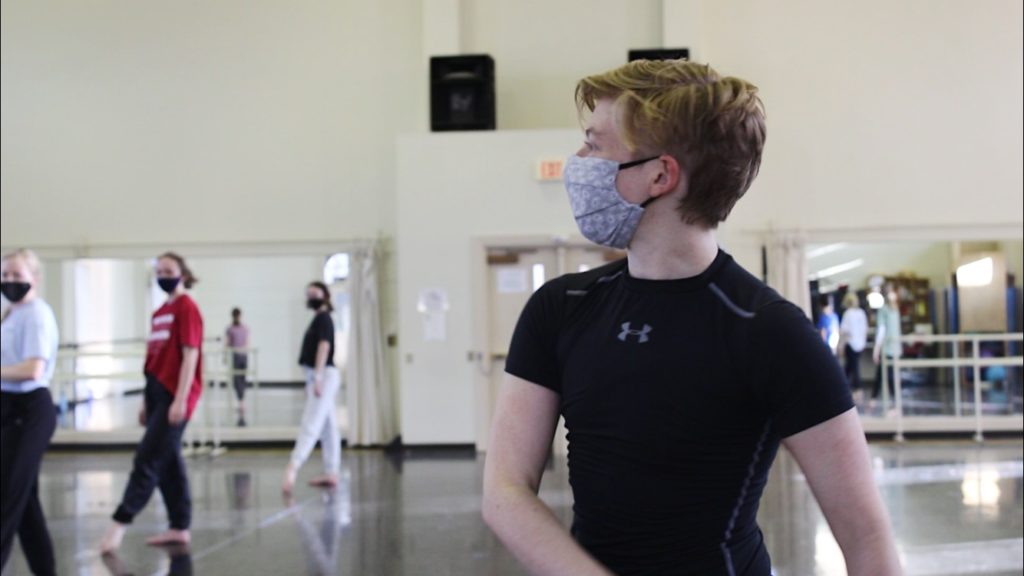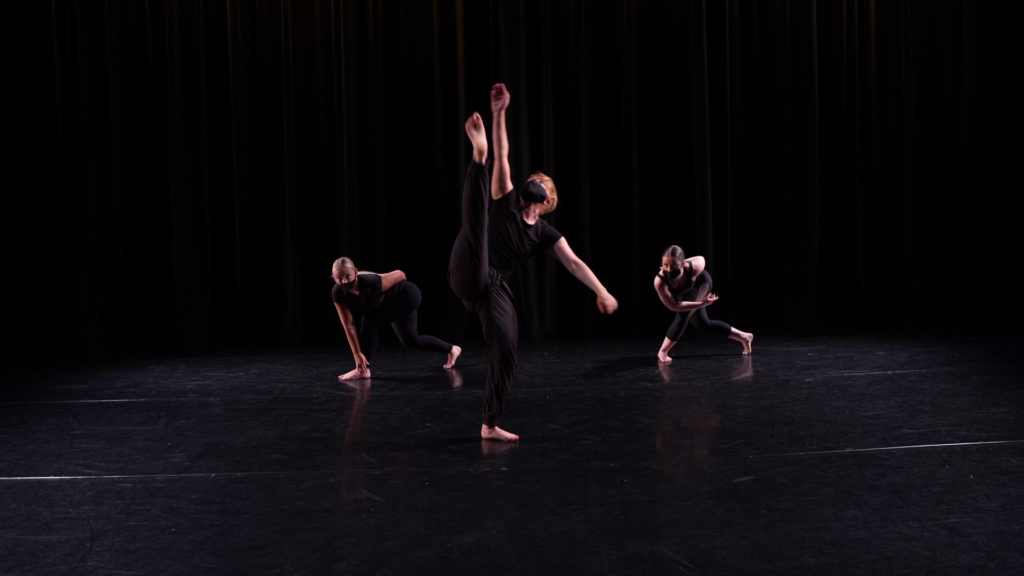
Updated 9/29/22
This April, Pacific Northwest Ballet’s Ashton Edwards made headlines for a rare company casting: a nonbinary dancer, assigned male at birth, performing on pointe in the Swan Lake corps de ballet. More significant, perhaps, is that Edwards is not alone.
Earlier this month, an article in The New York Times analyzed a new Centers for Disease Control report about the growing number of young people embracing a diversity of gender identities. The report signaled a significant rise in the number of young people who identify as transgender (the report did not ask the younger age group about nonbinary or other gender identities) and seems to represent a large generational shift in attitudes and perceptions.
Dance, too, appears to be shifting along the lines this report suggests, with the biggest changes coming from the ground up as younger dancers and choreographers make room for their authentic selves within their craft. From the same-sex ballroom dancing to companies like Ballet22 and projects like #QueerTheBallet, a new generation is pushing back against gender norms in dance. More and more, concert dance choreographers are creating roles for which any gender can be cast.
At the same time, there are powerful and vocal detractors legislating against this kind of openness, from the new law in Texas that treats gender affirmation as child abuse to the Florida law that bars public school teachers from talking about sexual orientation and gender identity. Recently in the dance world, UK choreographer Rosie Kay resigned from the company she founded amidst a battle with her dancers surrounding her views on sex and gender, and in Utah, dance teacher Kim DelGrosso is running for the school board for many reasons, including her opposition to gender inclusion.
In the midst of such contentious debate, the big question is: What does it mean to be gender-affirming and what impact might it have on dance education? How can we create an artistic space that allows for young dancers to feel seen and safe when their gender identity might be shifting or fluid?
“We’re talking a lot about opening up and starting to include queer populations and queer dancers lately, but it isn’t about suddenly adding queer dancers where they haven’t been there in the past,” says Dr. Fen Kennedy, a nonbinary assistant professor at the University of Alabama. “We’ve always been part of dance history, but history has often either hidden our identities or hidden our achievements. So it’s not so much that now we’ve got to open a new door, but that we have to look inside the community to recognize queer artists and what they’ve brought to the community, and just talk openly about all those things.”
Along with Dr. Kennedy, dance educator Alyah Baker, who teaches the dance class “Ballet for Black and Brown Bodies” in studios throughout the U.S. and is also an adjunct professor at Duke University, and psychotherapist Catherine Drury, a licensed social worker who works with dancers, weigh in on how you can further commit to diversity and inclusion in the studio through recognizing gender beyond the binary construct of male/female. This work goes beyond simply providing an all-gender bathroom in your school and offering students options in their dress code and costuming. Creating a gender-affirming space is an intersectional practice that provides opportunities for discovery, experimentation, and play that capture the imagination and develop the artistry of all students while also offering critical support.

Creating an Inviting Space
Kennedy: With me, it starts from the moment I introduce myself, because saying, “I’m Fen and I take they/them pronouns” is a pretty clear indicator that I have a certain attitude toward gender. But to keep myself safe in the classroom, I then also follow it up with ‘You are welcome to call me other pronouns if you have a strong belief that you need to.” There’s a power imbalance specifically in the classroom and I don’t want to be accused of forcing anything onto my students, but that’s not to say that this is something all transgender people should have to do.
Drury: Pronouns can help young people understand and affirm their identities early on and feel congruent in their identities. There doesn’t seem to be an age where it’s too young to be doing that—current research shows that most children actually have a stable sense of their gender identities by the age of 4. Introducing pronouns also helps facilitate a culture of acceptance and inclusion in the classroom. But if we’re seeing gender as more of a spectrum, that means there’s limitations to these categories and labels that we put on people—particularly for someone who’s gender diverse, they might not even find that any of the pronouns particularly fit with how they identify and prefer to simply go by their name. And so you can encourage people to share pronouns, but if someone doesn’t want to, or doesn’t have a particular pronoun that they identify with, leave room for that, as well.
Baker: Many of us are becoming familiar with not making any assumptions, asking a lot of questions, and having time for dialogue around names and pronouns and how students would like to be referred to in a space.
Dismantling Pervasive Gender Stereotypes
Baker: I don’t know that I was ever really using this “boys and girls” terminology or “ladies and gentlemen.” But often teachers would give corrections of, like, “This is about romance,” “This is about longing,” “This is about your prince or your boyfriend”—just hyper-cis-heteronormative things like that. I kind of knew from the beginning that I didn’t want that in my classrooms, especially because as a dancer, if I was longing for someone, it wasn’t gonna be the prince. We must be checking on those things and throwing them away. Since a lot of dance teachers don’t really go through teacher training, they mimic the things they’ve heard and were taught. And when gendered expressions sometimes slip out, I’m like, “Nope. That’s not what I meant.”
Drury: More traditional forms of dance are grappling not only with how to expand and adapt to incorporate greater gender diversity, but also how to let go of basic gender stereotypes, or our expectations of “What girls do” and “What boys do” in dance. A dance teacher doesn’t need to wait to find out whether they have a transgender or nonbinary student in their classroom to provide opportunities for students to explore aspects of dance outside of traditional gender roles. I think it can be helpful to think of it as not just accommodating gender-diverse dancers but really expanding the scope of what’s possible in dance across the gender-identity spectrum.
Kennedy: There’s also a history of performing other genders in ballet. We have seen men dancing women’s roles for a long time. And we have seen women dancing men’s roles for a long time. So if we want to truly acknowledge the history of ballet, we can teach the gender rules within the technique but allow everyone to do everything. It’s not about erasing history, it’s realizing that everyone should be allowed to try everything and work out what works best for them.
Tip: “Remember to watch out for any gender-related bullying or discrimination between students, or even just gender stereotyping, and take steps to intervene or gently correct people as a way to model and teach. Be aware of what your students may or may not be experiencing—whether it is significant social stressors at home or at school—and keep an eye out for opportunities to provide them with support.” [Some symptoms of social stress can include a student seeming more withdrawn, reserved or irritable.]
—Catherine Drury, psychotherapist
Doing the Deep Work
Baker: I really frame this in the same way as anti-racist training, where there’s a need to do a deep dive into yourself to understand what sort of habits we have and biases we carry—investigate those, read, and spend time with folks who have been doing the work a little bit longer. That’s where I started. Ask what you can do to make spaces feel as inviting as possible. And then be open to being led by folks who might find these spaces inaccessible. Have conversations and dialogue around what currently makes the space inaccessible and what it would look like for them to be able to enter the space and feel comfortable.
Drury: Educate yourself through all of the materials, resources and organizations that are out there for this purpose, and intentionally seek out stories of the lived experiences of gender-diverse individuals. Do some of that personal reflection first to try to uncover what your own biases are, what the different messages were that you were taught through dance and outside of dance related to gender and gender identity and gender stereotypes. It really does take an intentionality: being proactive about broadening your understanding of these issues and making room for people’s individual stories and experiences. It can be tempting to use that education to make assumptions about what you see in front of you, but it’s important to leave room for someone else to have a different experience and way that they choose to express themselves. Be open to that, as well.
Kennedy: You can use the correct language around gender as much as you like, but if you haven’t fundamentally shifted your perspective on how gender exists in the world, then you’re not going to succeed at having a truly gender-inclusive classroom. I’m in an environment where people get my pronouns right 70 percent of the time. There’s even a nonbinary bathroom in the place where I work. But when we host performances, there are signs on the theater doors, and they only direct guests to the men’s or women’s bathrooms. In general, it’s a reactive-versus-proactive thing. If you’re willing to react positively to the needs of gender inclusion when they come up, it’s a great first step. But I think what we have to get to is a proactive place where we imagine a world that is fully gender-inclusive and prepare ourselves for that world accordingly.

Giving Space to Play
Baker: If I think back to my training days, I was a powerful dancer. I liked to turn and jump. I could jump as high as all of the guys, and I was doing double tours with them and going across the floor at the slow tempo. So those things have actually already been happening throughout ballet history and training. There have been many examples of people who are gender bending or stepping outside of their perceived or assigned role to train in another way. I do love to shake things up and give some background history—like “This variation from this ballet is typically performed by someone that we perceive to be male.” But then also having a conversation that maybe everyone in this space can try it and see how it suits them or how they might modify. To me that is a lot of fun. I just remember doing that all the time as a younger dancer—not necessarily permitted or invited to do it—but I would be in competition with my friends to see who could do the most turns or the most jumps or be up high. We loved that sort of camaraderie and exploring what our bodies were capable of. And I think now I see it happening more intentionally, where students are being invited to explore different qualities and find their own individual way of dancing.
Kennedy: Being gender-inclusive doesn’t mean nothing is gendered. I surprise a lot of people when I say that ballet was really gender-affirming for me, as a nonbinary person, because I was allowed to do everything—the women’s way and the men’s way, and alternate between both. I could be read more correctly and affirm myself more easily in a ballet classroom because the rules around gender were codified. And if I met the rules, I could change genders day by day. So there’s something quite liberating in being able to put your body within the rule set.
Drury: For all children, cross-gender exploration through different types of play, different social groups, different hobbies or interests, is a normative part of gender development regardless of a young person’s future gender identity. There are a lot of ways that we can normalize this as part of identity development; in particular, adolescence is a developmental stage that centers around identity development, social learning and exploration. I think of gender as being just one part of an adolescent’s identity that they’re coming to understand in an individualized way. Educators then have the opportunity to really celebrate and encourage that identity exploration, even within the rigors of dance.




